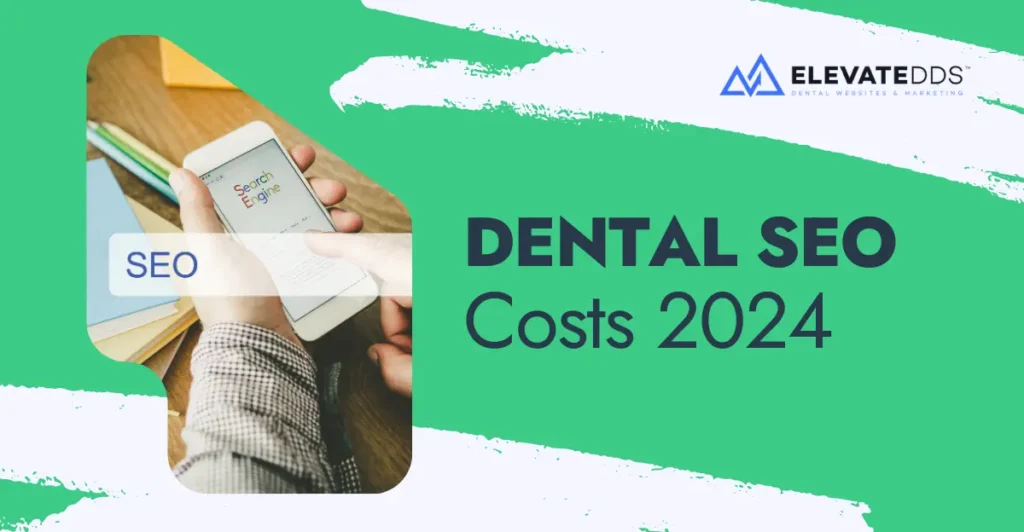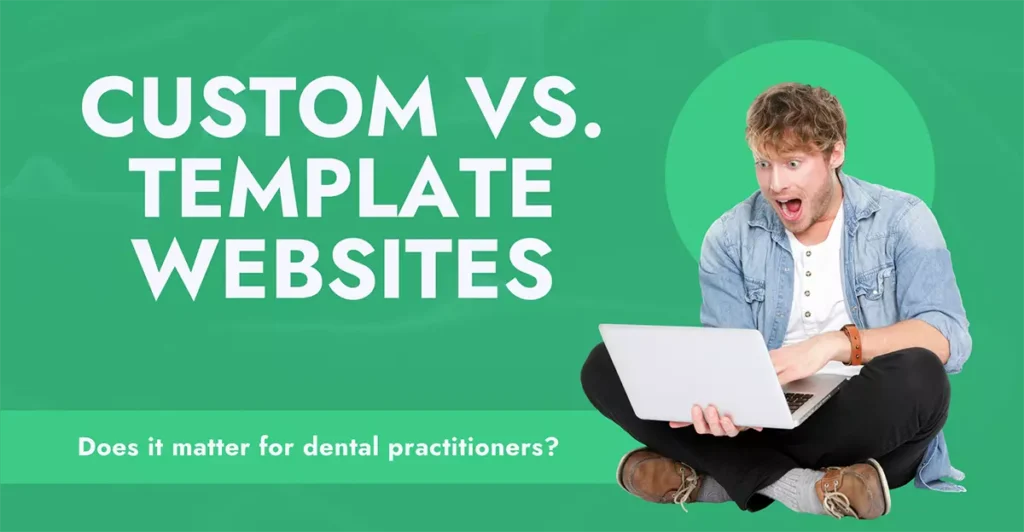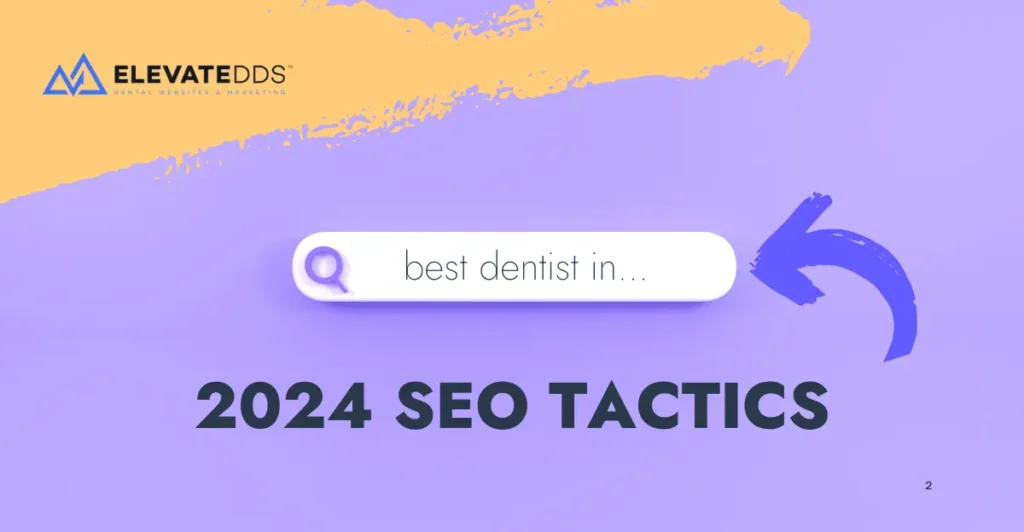Predicting Dental Websites in 2016

At the beginning of every year, we like to publish a piece on predicting the future for the upcoming year. 2015 brought us some tremendous changes and industry shifts in web design and online marketing. We had a historic shift away from using desktop and laptop computers to research websites. 2015 was the first year that Google actually saw more users performing searches on mobile and tablet devices, rather than on their computers. This meant that as an industry leader, we had to keep up with the mobile demand. Responsive design was one of the best methods for doing so when it came to developing dental websites.

Advances in cell phone and computer technology are evolving at rapid rates. We’ve already seen the iPhone 4 become obsolete in just a couple of years. Faster speeds are at the forefront of mobile and tablet technology. Developers realize there is a need for people to consume content as fast as possible, given that life has seemed to speed up in general. Attention spans have drastically decreased, causing the way we present media to change quite a bit as well. This means two things for the websites we will continue to build for dentists. 1): Pages need to load even faster so that people can view your content as quickly as possible and 2): Site content will need to grab the visitor’s attention extremely quickly. Web content will have to be optimized for even more devices moving forward.
But what does the future hold for dental websites in 2016? In this blog post, I’ve put together a couple of predictions for the future of web design, as well as some thoughts on dental marketing in 2016.
Prediction #1: Greater shift towards mobile first design
As we stated above, in 2015 we saw mobile searches take over the majority share of Google searches. This means that more people were using their mobile and tablet devices to find and view websites than they were desktop computers. So we had to adapt development accordingly to meet this demand. In 2016 I’m going to predict that more and more design companies will adopt a “mobile first” approach. This means that instead of designing websites first for computers and then for mobile devices, it will start to work the other way around. Designers and developers will start to build websites for mobile devices first, and then build out more content to fill desktop computer monitors.

Are you wondering what the difference actually looks like? Well, “mobile first” page designs typically look fantastic on mobile devices. They are completely vertical scrolling sites with no lateral scroll. Images won’t be pixelated and will be optimized to load extremely fast. A call to action will be clear and concise on each page. Just picture the best mobile websites you’ve visited. Chances are these were designed for mobile user experience only.
On desktop computers, mobile first page designs tend to have bigger blocks of blank space. These don’t generally look bad, they just aren’t overloaded with too much content. And this is actually a pretty good practice anyway. Too many desktop only websites tend to have too much information and too many calls to action. This typically leads to confusion by the visitor and high bounce rates (visitors immediately leaving your site to look at a different website).
Prediction #2: Aggregate reviews will remain king for local results
We saw a shift in Google “Map Pack” results within Google’s search results pages in 2015. Map pack results went from showing several local listings (up to 7) to showing only 3 results at a time. Most often, the top 3 results will show an aggregate star rating that clearly does not come from only Google map reviews.

One specific question we get from doctors is; “how does Google determine who ranks in the top 3 local results and from where are these star ratings pulled?” The answer to this question can often be a complicated one. There are optimizations we can make to help you out here of course, but one of the biggest factors is online reviews. The reviews that form a client’s star ratings are generally pulled from Google Maps reviews, however this isn’t always the case. Reviews can actually be pulled from several trusted sources such as Yelp and Facebook as well. And Google’s local rankings actually take into account your business ratings from ALL trusted sources, not just Google.
Managing your online reputation and encouraging positive reviews will be EXTREMELY important in 2016. But selecting the right software and service to do so will also be critical. Popular products such as Lighthouse 360 for dentists (& other doctors) aren’t helping your online reviews as much as you think! There are better products out there that can help your reviews, ratings and rankings much more than these popular softwares. The problem is that these software companies don’t often market to local dentists, which is probably why you’ve never heard of them.
At Elevate DDS, we will be rolling out a new reviews and ratings system in partnership with Grade Us shortly. This will be a part of our dental reputation management services. Stay tuned for further updates!
AND…. No one will read your “testimonials” page in 2016
Also worth mentioning, is the fact that no one actually read your testimonials page in 2015. And even less visitors will view the page in 2016. We viewed the Google Analytics data from a few of our client’s websites and in fact, no one is actually viewing the “testimonials” page.
The truth is that people don’t trust what a company posts as reviews or testimonials on their own website. They will check all outside sources for reviews, as these cannot be faked or falsified by your business. If you want to offer something of value, then you should think about embedding reviews from trusted sources such as Yelp, Facebook or Google Maps.
Dental marketing in 2016
Your marketing will have to be clear, concise, and to the point. I already mentioned that visitor attention spans are decreasing and advertising platforms have taken notice (the biggest of which is Google). Text ads and Google Pay-Per-Click advertising will need to be even shorter and succinct. Ads should already be targeted more for mobile, but this will continue to grow more in 2016. But let’s talk about the 800 pound gorilla in the room that is Dental SEO.
Performing SEO for dentists in 2016
The act of optimizing web pages for search engines continues to evolve. Google generally finds a way to rank individual web pages using a list of quality guidelines, in order to populate the most relevant pages for an individual keyword search. Occasionally, people learn how to game the system with low quality results, and then Google finds a way to correct things. This has been a never ending cycle since the beginning of Google. This doesn’t mean SEO is bad, it just means that we’ve had to change the way we approach search engine optimization. There are no short cuts. Building an organic presence, the right way, will take some time.
Important SEO factors for 2016 will include speed and image optimizations. Adding quality content or blog posts on a consistent basis is also extremely important. At Elevate DDS, we definitely encourage clients to write blog posts on their own, and send us any kind of website additions and updates they would like to see implemented. This is also a good way to help your SEO and we are always happy to make the updates! You can view more information about our SEO services for dentists here.
Social media in 2016
Social media will most likely evolve and sort of split in 2016. Social media for dentists should, first and foremost, be used for customer retention and engagement. But Facebook may be planning for something larger in the not so distant future. It appears as though the social media giant has been testing a feature that will soon rival Yelp. If this platform turns out to be robust and does in fact rival Yelp, then expect marketers to scramble to figure out the best optimization methods. With Google search results already being filled with Yelp, Twitter and Facebook pages, expect any Facebook local segments to play a major role as well.
Are you prepared for 2016 and beyond?
Curious if your dental website company is keeping up with the advancements in web standards and technology? At Elevate DDS we offer a free analysis of your current website and marketing. This should help you in understanding where your current website & marketing stands, and where it needs to be.
Please feel free to contact Elevate DDS with any questions, comments or concerns!
Need to speak with an expert?
Maximize your practice's efficiency today by scheduling an appointment with one of our experts. We're standing by to help you in your journey of elevated practice growth.
Drop Knowledge
Share these Elevated Insights with your professional network.
Elevated Insights
Dive into our other blog posts featuring creative ways to elevate your practice and dominate your service area.



